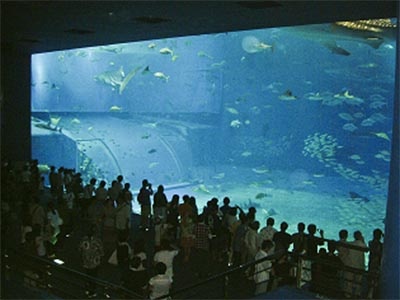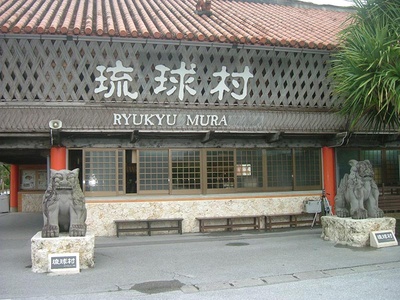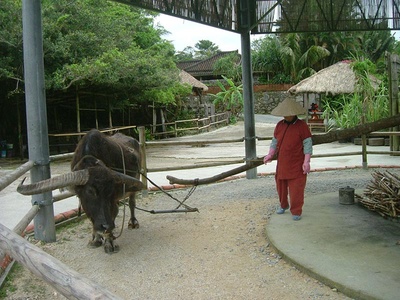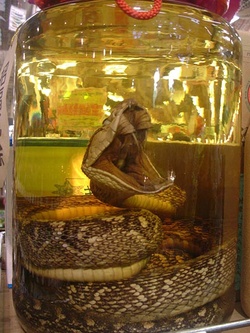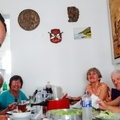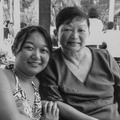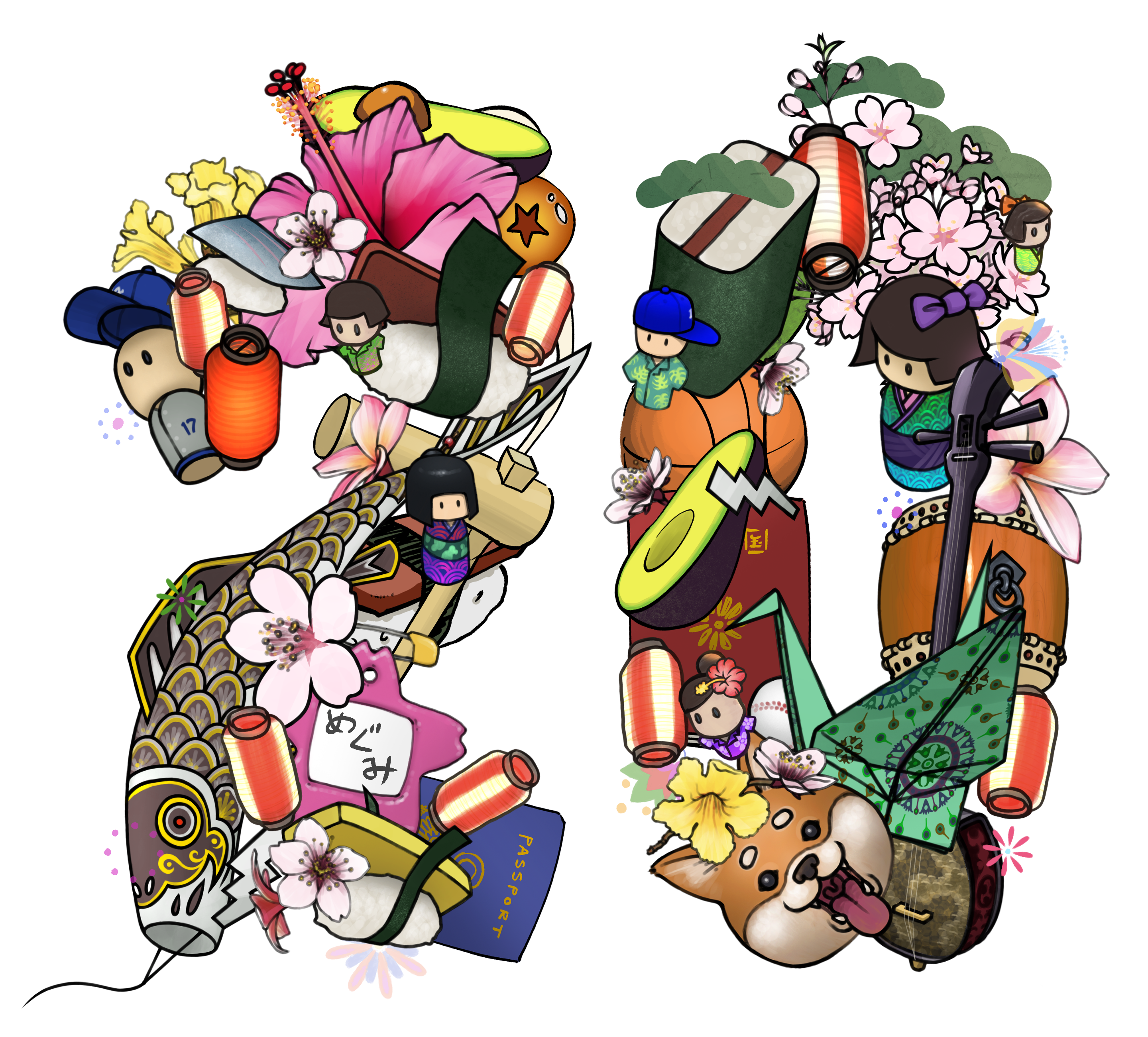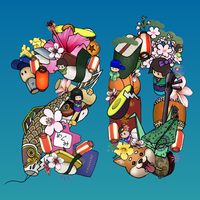I've been waiting for the opportunity to visit Okinawa for years and that's why this famous Japanese archipelago, made up of beautiful islands and beaches, deserves an article about it. Fortunately, I was able to personally see some of its peculiarities. Considered different from the rest of Japan because it belonged to an independent kingdom called Ryukyu, Okinawa ended up developing its own culture and part of its history is very different, having received more influences from China than even from Japan itself.
After World War II and the Battle of Okinawa in 1945, Okinawa remained under US administration for 27 years until it was returned to Japan in 1972 and since then, the US has maintained military air bases in the archipelago. The airport is part of one of these bases. It is common to see names of establishments in English or American flags flying in the streets and there are many restaurants serving steaks, fries and fast-food snacks.
Upon arrival at Naha airport, I noticed the presence of American soldiers. I started a conversation in English with an American who was at the airport and he couldn't believe I was Brazilian because of my slanted eyes.
Most houses in Japan are made of wood, but typical modern Okinawa houses are made of concrete with sealed windows to protect from typhoons . The roofs are designed to be resistant to high winds, with tiles attached to the cement and not just propped up as would be done elsewhere in Japan.
Generally, there are two dragons on the roof of houses which are called shisa or shishi. The one placed on the right side has an open mouth to attract good spirits and expel bad spirits. It's the female. The male, on the left, has his mouth closed to keep the spirits good and protect the house. This custom is influenced by the Chinese and today, we easily find shisas in stores, in different sizes and colors, both for keychains and for decoration.
The tour bus drivers were the first ones I saw wearing very printed or flowery shirts, with strong, typical Okinawa colors. Then there were employees at supermarkets, hotels, convenience stores and restaurants. I found it interesting because the prints and strong colors give the space a more uninhibited feel. People are very friendly, they like to chat and talk to us. It seemed to me that they are more curious and are not so afraid of talking to strangers.
Speaking of strange, just as it is strange for Brazilians to enter a room with unknown people naked, the custom of wearing a Brazilian bikini is strange for the Japanese. Bikinis in Japan are larger on both the top and bottom and are generally sold with a skirt, dress or shorts as a swim cover-up. This seemed to be no different in Okinawa.
The beaches are very beautiful, the hot climate prevails and the number of resorts is high, which is why Okinawa is well sought after by Japanese tourists, being considered the “Hawaii of Japan”. The beach sand is full of very different coral remains and shells. Sometimes, the bathing area is surrounded by a net, to protect bathers from the abundant jellyfish. The Churaumi Aquarium is a famous aquarium in Japan for its grandeur and rich diversity of species. It is the second largest in the world after the Georgia Aquarium in Atlanta. I was able to touch a starfish and see strange creatures. The main aquarium, measuring 7,500 cubic meters, is 60 centimeters thick to withstand the pressure of its contents. It's really huge and I was thrilled to see so many dozens of marine animals up close. Rays, schools of fish, sharks and jellyfish swam calmly in the aquarium as if the environment really were the sea. I had never seen a dolphin show, it was the first time. These docile animals are quite intelligent and I was enchanted by their friendliness, but I confess that I felt sorry for being out of their habitat. I imagine they should treat them well, but in any aquarium or zoo, I feel a little remorseful about visiting and contributing to the rescue of animals in nature. They are attractions for humans, who said that we humans are superior to them and have the right to kidnap them from nature?
The Ryukyu Mura is an imitation of a village from the time of the Ryukyu kingdom. A small mill is also displayed in this village, where the famous Okinawa brown sugar is still made in the traditional way in which a buffalo helps to squeeze the sugar cane with the mill. There is also an area dedicated to the venomous snake species, the "Habu", found only in Okinawa and Taiwan.
Okinawa's climate allows for the cultivation of papayas, sweet potatoes, bananas, coconut water, sugar cane and pineapples. It's not possible to compare it with Brazil, but compared to the prices of these products in the rest of Japan, they are a little cheaper.
A typical dish of the region is Okinawa Soba. It is served with very tender pieces of pork. Japan is the country with the highest life expectancy in the world and among the Japanese, Okinawans stand out, especially women, with an average lifespan of 86 years.
There is an abundance of go-ya, which is a vegetable, a type of bitter cucumber, also called nigauri and there are many dishes that use this ingredient. It is common to see snakes drinking. I tried it and found it very strong. The seller said the alcohol content was 25%.
There is the ORION beer factory there, which is the 5th largest brewery in Japan, but only commands about 1% of the Japanese beer market. However, in Okinawa, it controls more than 50% of the beer market. It is a factory that places a lot of value on recycling.
I visited the Nakagusuku Castle Ruins. What a beautiful view from up there! It was the only castle that escaped damage from the Battle of Okinawa, while Shuri-jo was almost completely destroyed. In 1992, Shuri-jo was reconstructed based on photographs and historical records. The view from the highest point of the castle is very beautiful. Previously divided into fiefdoms, it was unified by King Sho Hashi, who designated Shuri Castle as the administrative center. The Nakagusuku Castle Ruins and Shuri-jo are World Heritage Sites.
In just two days of traveling, I learned and retained all these interesting facts about Okinawa that will remain in my memory forever. It really is a special place and deserves to be visited by anyone who has the opportunity!
© 2009 Silvia Lumy Akioka


